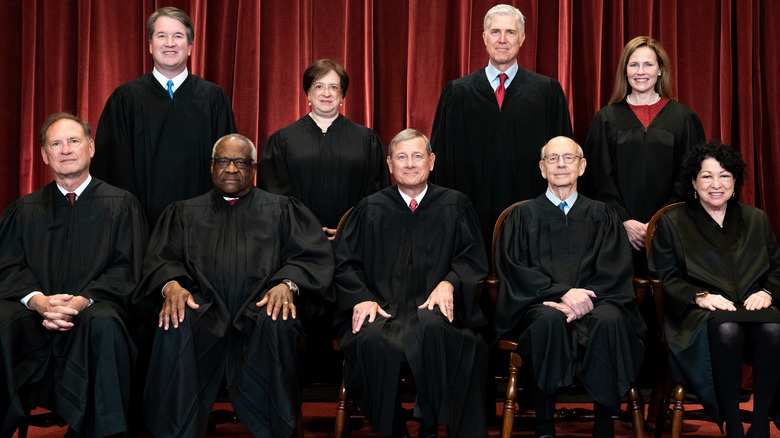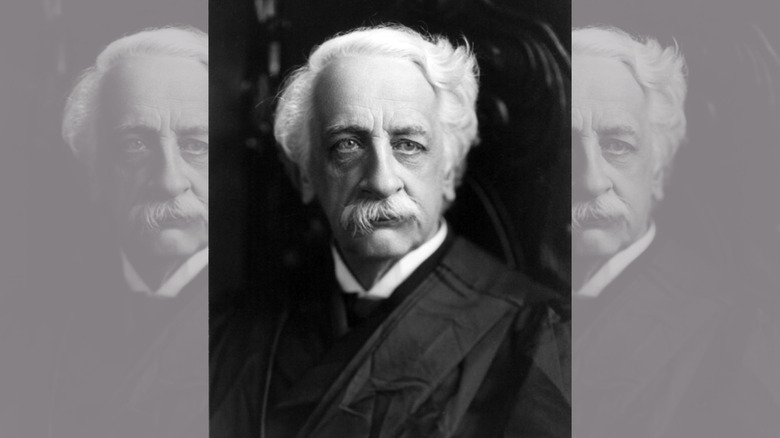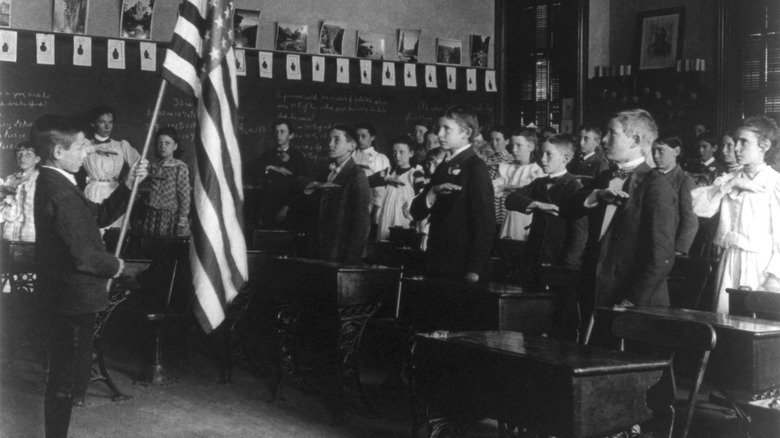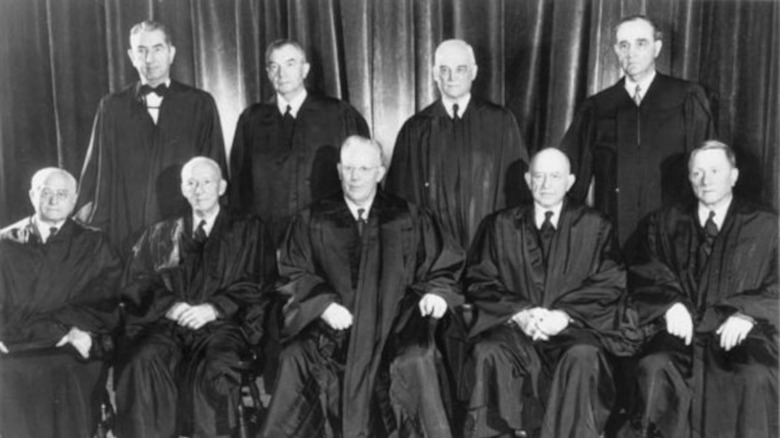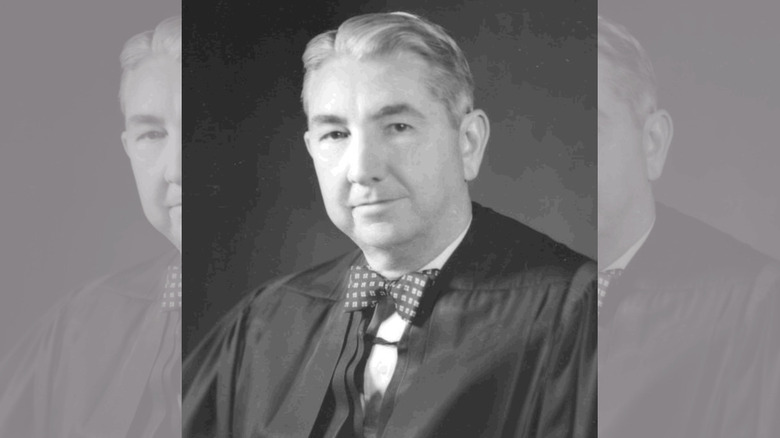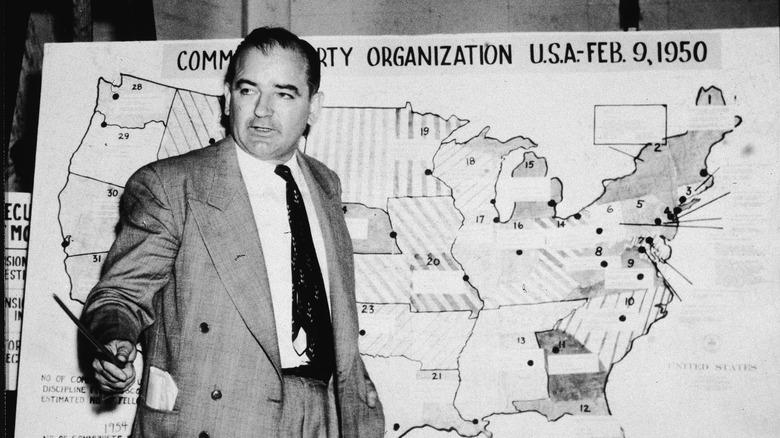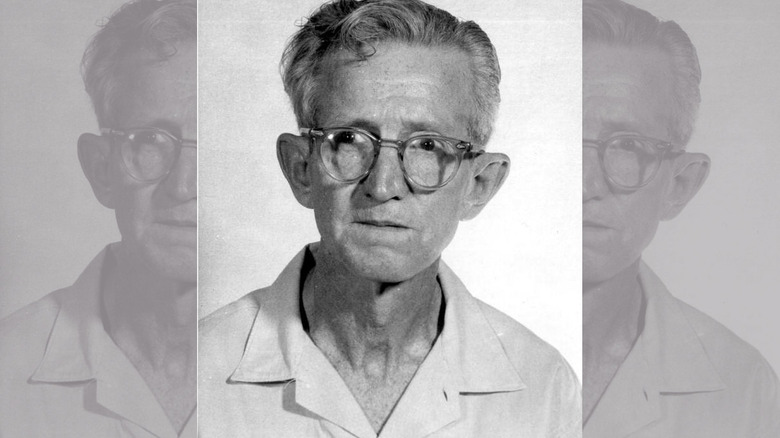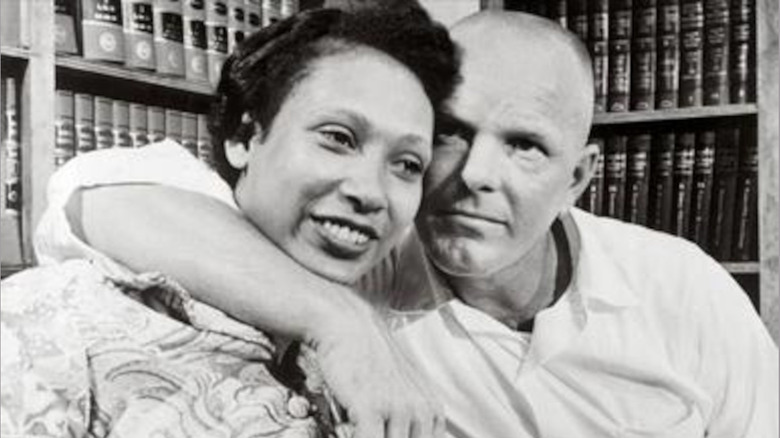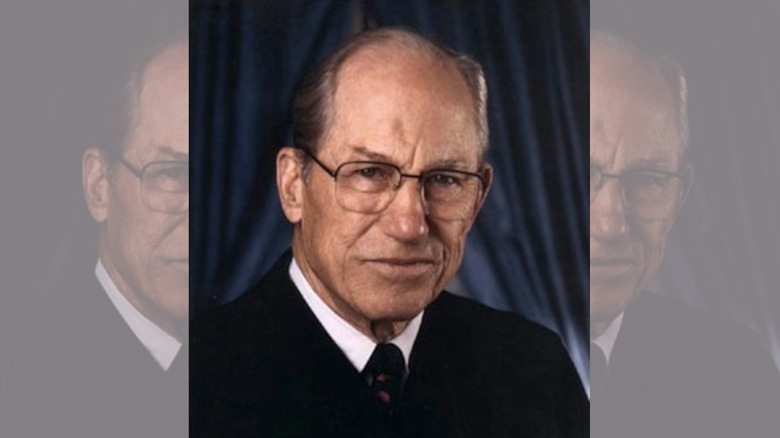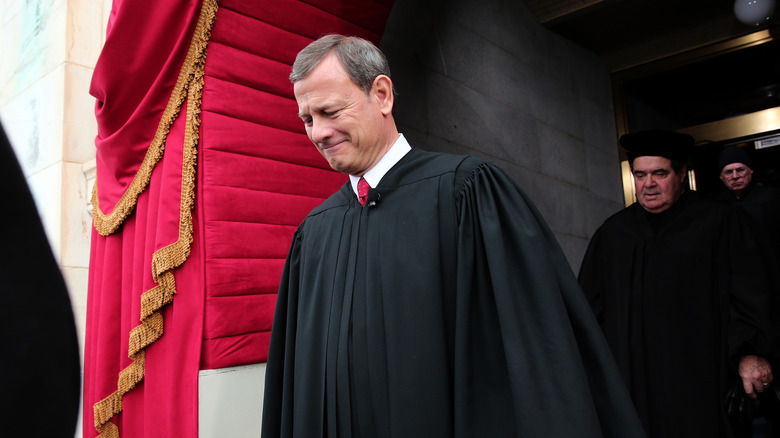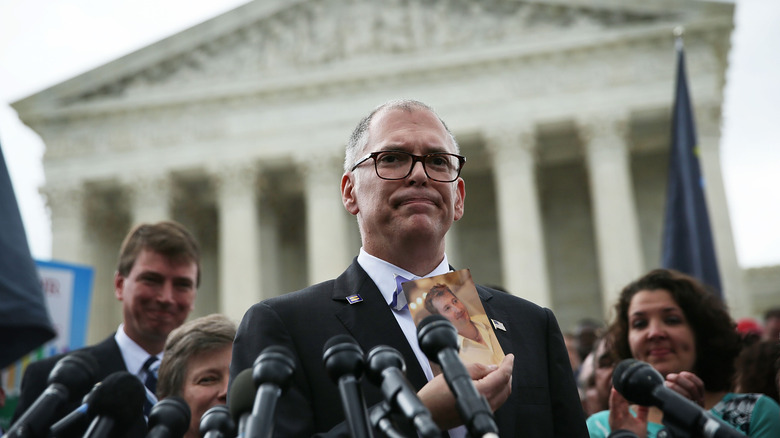The Supreme Court Has Overruled Itself More Than You Think
The Supreme Court of the United States is one of the most powerful parts of our government. Representing the ultimate judicial authority, the Court is a vital aspect of our three-pronged government, serving as a check against the legislative and the executive. The Supreme Court has an enormous impact on the everyday lives of Americans as it shapes the laws that govern us in ways that are sometimes very obvious and sometimes totally obscure.
But those more obvious ways shape our perception of the Supreme Court — the decisions that make headlines and draw protests. The court system moves very slowly, so when there is an extremely important Supreme Court case the decision usually seems monumental — and unchangeable. The Supreme Court is supreme, after all. There's no higher court, no place to appeal if you don't like their ruling. It's an understandable assumption that once the Supreme Court rules on a subject it's extremely rare for it to ever reverse itself.
The truth is, it is kind of rare — but not nearly as rare as you might think. According to The Conversation, between 1789 and 2020 the Supreme Court has reversed its own precedents just 146 times. But looking at it from another perspective, the Court has overruled itself 21 times since John Roberts became Chief Justice in 2005 — including when it overturned both Roe V. Wade and Planned Parenthood v. Casey in 2022, ending the federal right to abortion in the United States — which means just slightly less than once every year.
West Coast Hotel Co. v. Parrish (1937): Labor rights
According to The Hill, in 1896 New York State passed the Bakeshop Act, which was a progressive effort to support labor rights. The law limited how long employees could be forced to work, and specifically limited the hours that a baker could work, to 60 per week. Joseph Lochner was charged with violating that law, and fought for his right to abuse his employees, and took it to the Supreme Court. As explained by How Stuff Works, in a 1905 decision written by Justice Rufus W. Peckham, the Court ruled the law was unconstitutional because it violated the right to enter freely into contracts, as specified by the 14th Amendment.
Later, in 1923, the Court ruled in a separated case that setting a minimum wage for women was similarly unconstitutional. The basic argument was that states weren't allowed to get between employers and employees.
As noted by legal historians Randy E. Barnett and Josh Blackman in their book "An Introduction to Constitutional Law," in 1931 President Herbert Hoover appointed two progressive judges to the Supreme Court, and that changed the attitude of the Court to the issue. When Washington state passed a minimum wage law, Elsie Parrish sued when she received less than the minimum, and in 1937 the Supreme Court overruled its earlier precedent, establishing specifically that a minimum wage for women was constitutional, which also overruled its 1905 Lochner decision.
West Virginia State Board of Education v. Barnette (1943): Free speech
As noted in the book "Free Speech onTrial," in 1935 a school in Minersville, Pennsylvania mandated a salute to the flag by all students every morning. The Gobitis, a family of Jehovah's Witnesses, held that saluting the flag violated their religious beliefs and refused to let their children participate. The Gobitis children were expelled, and the family sued the school district. As noted by the Oyez Project, the Supreme Court ruled 8 to 1 in 1940 in favor of the school district, asserting that school boards had an "interest" in creating "national unity."
According to the National Constitution Center, just three years later the Supreme Court overruled itself. Britannica reports that in 1942 West Virginia enacted a statewide rule requiring students to salute the flag, and another Jehovah's Witness, Walter Barnette, sued over the rule. In 1943, West Virginia State Board of Education v. Barnette ruled that freedom of speech included the freedom not to speak against your will. The ruling also generated one of the more famous quotes from the Supreme Court when Justice Robert Jackson wrote, "If there is any fixed star in our constitutional constellation, it is that no official [can] force citizens to confess by word or act their faith therein."
Brown v. Board of Education of Topeka (1954): Civil rights
One of the most famous cases ever argued before the Supreme Court not only ended the era of legal segregation and propelled the cause of Civil Rights forward, it also overruled A Supreme Court precedent that had stood for nearly 60 years.
As explained by The Hill, in 1896 Homer A. Plessy sued the state of Louisiana over its separate rail cars for whites and Blacks, arguing that the 14th Amendment's Equal Protection Clause made that illegal. The Supreme Court ruled 7-1 against Plessy, focusing on the "equal" part of that clause. Basically, the Court held that as long as the accommodations or services were equal, they could also be legally separate.
How Stuff Works notes that this decision provided the legal backbone for the racist "separate but equal" policies of the South for the next six decades. In 1951, 13 parents sued the Topeka Board of Education (The Oyez Project notes that the case was a consolidation of several cases across several states) over the separate educational facilities provided. The Court's reversal was total: A unanimous decision that found "separate but equal" to be a ludicrous idea, and which endorsed the common sense idea that dividing education based on race has a "detrimental effect" on the children involved. While this case didn't end racism in America, it ended the fiction that it could somehow be legal and "civilized."
Mapp v. Ohio (1961): Unreasonable searches
This decision had to do with how the Fourth Amendment, which protects citizens from unreasonable or unlawful searches and seizures, is interpreted. According to How Stuff Works, in 1949 a physician, Dr. Julius Wolf, was convicted of performing abortions, which were illegal at the time. Wolf sued to have his conviction overturned because the police had entered his office without a warrant and seized his appointment book, then used the information in it to line up witnesses against him.
According to The Hill, the Supreme Court made the incredible decision to rule against Wolf, asserting that illegally seized evidence did not have to be automatically excluded and muddying the waters when it came to defining what constituted an "unreasonable" search. A little more than a decade later, Dollree Mapp was convicted of possessing obscene materials. The evidence used against her had been gathered by police during an illegal search of her home, a search that was sparked by a wholly separate investigation (the police were looking for a fugitive at the time). This time, the Supreme Court voted 6-3 in favor of Mapp. The opinion authored by Justice Tom C. Clark asserted that the Fourth Amendment's protections were clear: No evidence stemming from an illegal search was admissible in court, period.
Keyishian v. Board of Regents of the University of the State of New York (1962): The Red Scare
As noted by How Stuff Works, the 1950s in America included a wild, paranoid time known as the Red Scare when people were so worried about communist infiltration they were perfectly happy to ruin people's lives over any appearance of disloyalty. Led by bullying, populist Senator Joe McCarthy, the persecution of people for political beliefs or membership in supposedly subversive groups was known as McCarthyism. In New York State, for example, a law was passed that allowed schools to fire teachers if they joined "subversive organizations."
According to History, a group of teachers and parents challenged the law. The teachers were all fired, and the group took it all the way to the Supreme Court, which ruled 6-3 in favor of the law on the reasoning that it was well within a state's rights to protect "immature" minds from "subversive propaganda." Notably, the teacher's union, which had encouraged its members to resist the law, vowed to keep fighting to overturn it.
In 1954, Senator McCarthy was censured by the Senate and McCarthyism faded away. A few years later, a professor, Harry Keyishian, refused to cooperate with the law, was fired, and he sued. This time, the Supreme Court ruled 5-4 against the law, describing it as overly vague and infringing on Keyishian's First Amendment rights, thus overruling the Adler decision.
Gideon v. Wainwright (1963): The public defender
There are a couple of things every American knows about our criminal justice system. You know that you have to be read your rights if you're arrested, for example, and as a direct result you know that if you can't afford an attorney to represent you the court will appoint one for you. Your public defender might not be the best legal mind in the business, but it's usually better than nothing.
What a lot of people don't know is that the assurance that an attorney will be appointed to defend you is relatively recent. As noted by Britannica, in 1963 the Supreme Court ruled unanimously that the Sixth Amendment's "right to counsel" extended to felony cases in state courts. The case involved a man, Clarence Earl Gideon, who'd been charged with burglary in Florida. Gideon had asked for a court-appointed attorney but was denied, attempted to defend himself, and sued after his conviction. The Court accepted the argument that the 14th Amendment's "due process" clause required that counsel be provided to all defendants and compelled the states to do so.
As noted by The Constitution Center, his decision directly overruled a 1942 Supreme Court decision, Betts v. Brady, which offered the interesting perspective that a trial could be considered fair even if the defendant lacked legal representation.
Miranda v. Arizona (1966): The right to remain silent
The phrase "You have the right to remain silent. Anything you say can and will be used against you in a court of law" is part of what's known as the Miranda Warning, and it's one of the most familiar texts in modern American life. If you've ever watched a TV show or film involving police, you've definitely heard it many, many times. Yet as The Constitution Center explains, it's a surprisingly modern innovation dating back to just 1966, thanks to the Supreme Court overturning not one but two precedents.
History explains that on March 2, 1963 Arizona police arrested Ernesto Miranda for the abduction and rape of a Phoenix woman. Miranda confessed to the crime, but later recanted, claiming he was unaware he was under no obligation to say anything. Miranda's court-appointed attorney didn't offer much of a defense, and Miranda was convicted. The American Civil Liberties Union (ACLU) took up his appeal. According to the Oyez Project, the key question was whether the 5th Amendment protection against self-incrimination applied to police interrogations.
As reported by Britannica, the Supreme Court eventually voted 5-4 in favor of Miranda. As noted by historians Saul Brenner and Harold J. Spaeth in their book "Stare Indecisis: The Alteration of Precedent on the Supreme Court," this overturned two prior Court rulings from 1958: Crooker v. California and Cicenia v. Lagay, which had centered on access to counsel during police interrogations.
Loving v. Virginia (1967): Interracial marriage
It might seem incredible, but until 1967 there was nothing to stop individual states in this country from making interracial marriage illegal. As noted by How Stuff Works, this dates back to 1883, when the Supreme Court issued what might be one of its most racist rulings of all time. In Pace v. Alabama, the Court held that states had a valid interest in "protecting" marriage, and that interracial marriages threatened "white marriages."
That's incredible by itself, but the fact this precedent stood for the next 84 years is absolutely depressing. As explained by History, Richard Loving and Mildred Jeter were married in Washington D.C. in 1958. They returned home to Virginia to start their married life. Five weeks later, police raided their home while they slept and arrested them for violating Virginia's anti-miscegenation law. In order to escape jail, the couple pleaded guilty, then moved out of Virginia. They then sued, assisted by the American Civil Liberties Union (ACLU).
As noted by the Oyez Project, the Court unanimously overruled itself, finding that these laws violated the equal protection clause of the 14th Amendment. The result didn't just affect Virginia; all such laws in the South (and there were a depressing number of them) were immediately invalidated, and people were finally free to follow their hearts.
Planned Parenthood of Southeastern Pennsylvania v. Casey (1992): When Roe still ruled
When the Supreme Court ruled on the Roe v. Wade case in 1973, it seemed to settle the issue of abortion for once and for all, but in reality it was just the beginning of a lengthy fight that's still raging today. As noted by The Constitution Center, in 1992 the Court overruled portions of two separate precedents that it had established in support of Roe: 1982's Akron v. Akron Center For Reproductive Health and 1985's Thornburgh v. American College of Obstetricians and Gynecologists, both centered on the attempts by states to restrict abortion access. These precedents signaled the Court's reluctance to undermine Roe v. Wade.
But just a few years later, the Court ruled on Planned Parenthood of Southeastern Pennsylvania v. Casey. As explained by NPR, while the Court's ruling in Casey confirmed Roe v. Wade and the legal right to abortion, it also established the standard of "undue burden" when it came to restrictions on abortion access. This not only reversed portions of Thornburgh and Akron, it also replaced the much more specific trimester framework established under Roe, and has acted as a wedge for states to slowly erode abortion access ever since. This is because the phrase "undue burden" in terms of restricting access is subjective and easy to interpret any way you want, allowing states to craft restrictions that don't violate a shifting, blurry standard.
Both Roe and Casey were overturned by the Dobbs v. Jackson Women's Health Organization decision on June 24, 2022.
Lawrence v. Texas (2003): Legalizing sodomy
As reported by How Stuff Works, in 1986 the Supreme Court heard arguments in Bowers v. Hardwick. The case stemmed from a law in Georgia that made anal sex between consenting adults, whatever their sexual orientation, illegal. Despite this official lack of a specific target, The Washington Post notes that these laws were overwhelmingly used against gay men, who were sometimes classified as "habitual offenders" because of arrests under anti-sodomy laws.
The Supreme Court's ruling in the Bowers case reeked of homophobia, too. In its 5-4 decision written by Justice Byron R. White, the Court basically agreed that sodomy had traditionally been considered a deviant and dangerous practice, and noted that the Constitution didn't provide specific protections for homosexual acts.
Nearly two decades later, The Texas Tribune reports, John Lawrence and Tyron Garner were in Lawrence's Houston apartment when a police officer burst in and arrested them under the state's anti-sodomy laws. The duo chose to plead "no contest" to the charges specifically so they could challenge the law, taking that challenge to the Supreme Court. The Court completely reversed itself, ruling that anti-sodomy laws violated the due process clause of the 14th Amendment. Three justices — Clarence Thomas, Antonin Scalia, and William Rehnquist — dissented.
Citizens United v. Federal Election Commission (2010): Money equals speech
If you're old enough, you might remember the good old days when corporations weren't free to just firehose money into our political process. In fact, as noted by How Stuff Works, in 1990 the Supreme Court voted 6-3 to support a Michigan law that blocked companies from contributing to political campaigns or buying political ads. That decision, Austin v. Michigan Chamber of Commerce, set a precedent that lasted just 20 years.
In 2010, the Supreme Court under Chief Justice John Roberts reversed itself pretty dramatically. In one of its most famous recent cases, it ruled in Citizens United v. Federal Election Commission that money was essentially the same as free speech, and corporations shared a right of free speech with individuals. As noted by The Conversation, the justices were well aware they were overturning what was considered "settled law," but argued that the reasoning behind the 1990 decision was flawed, making this a necessary correction.
The Los Angeles Times notes that the impact of overturning this precedent was unexpected: Instead of corporations dumping money into politics, it's largely been extremely wealthy individuals. Billionaires are now able to create secretive troughs of money to promote their political agendas. In other words, Citizens United gave the ultra-wealthy even more power.
Obergefell v. Hodges (2015): Legalizing gay marriage
The right to marry anyone you want seems pretty much like common sense, but for a very, very long time marriage between people of the same gender wasn't guaranteed to be legal in the land of the free. As noted by How Stuff Works, in 1972 the Supreme Court codified this in their ruling on Baker v. Nelson. In that case, two men, Jack Baker and Michael McConnell, argued they had a constitutional right to marry. The Supreme Court issued a one-line dismissal, basically stating that the federal government wasn't involved.
In 2015, several groups of same-sex couples joined forces to challenge laws banning same-sex marriage again, with the case eventually consolidated under the name of Jim Obergefell. According to the Oyez Project, this time they argued forcefully that the 14th amendment's due process clause guaranteed the right to marry as a "fundamental liberty." The Court agreed, ruling 5-4 in favor of the plaintiffs. This reversal of precedent had the effect of legalizing same-sex marriage throughout the country.
As noted by Vox, Obergefell may be a short-lived precedent. The same reasoning used to overturn Roe v. Wade in June 2022 would apply to several other precedents, including Obergefell, making it vulnerable to a well-crafted challenge that might appeal to a conservative-leaning Court that could come at any time.
